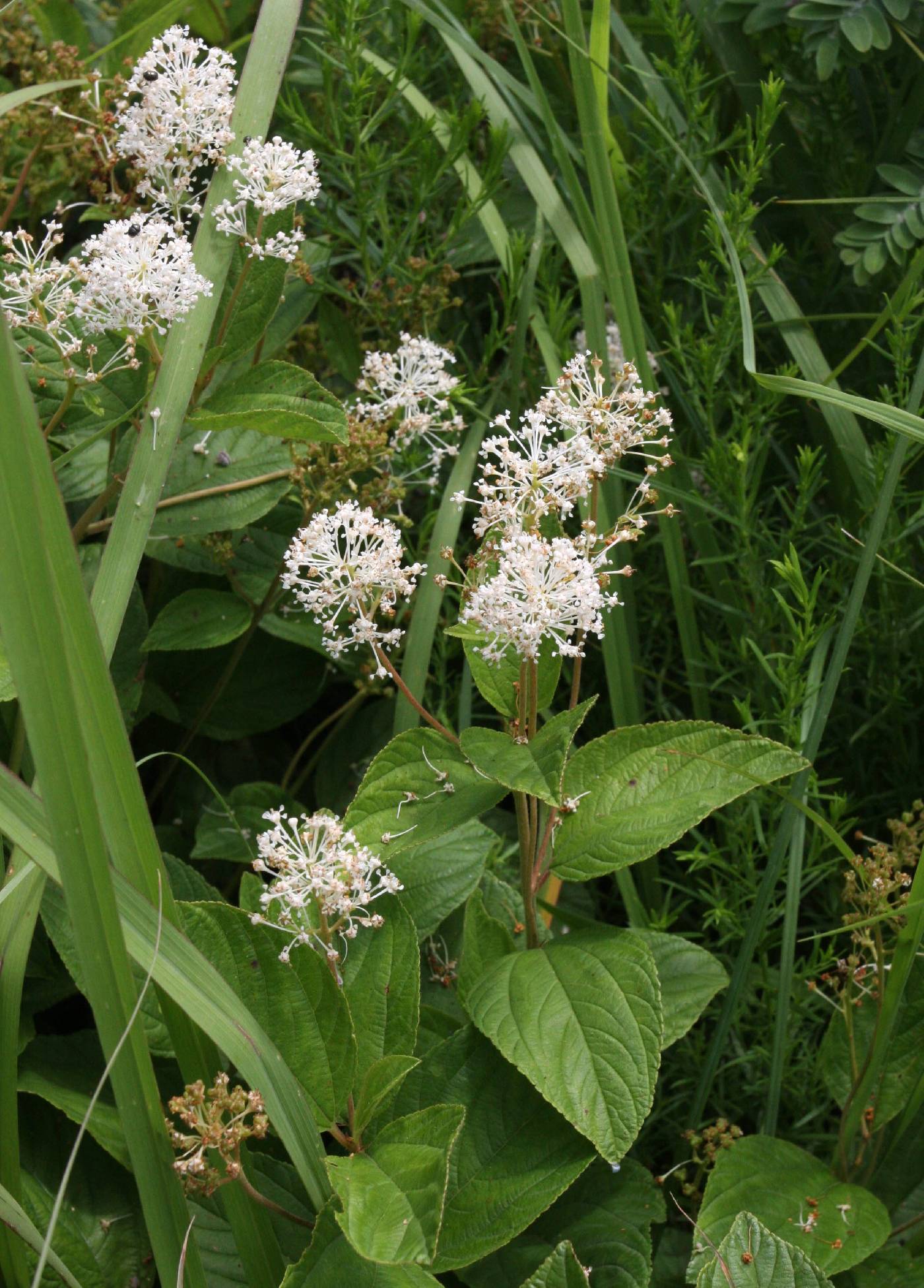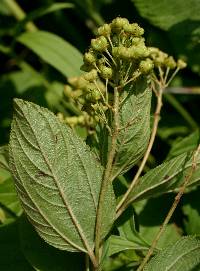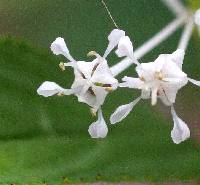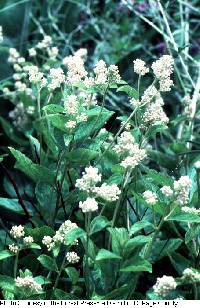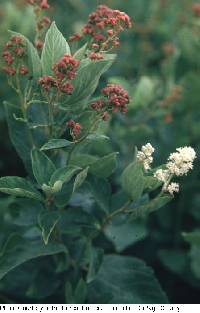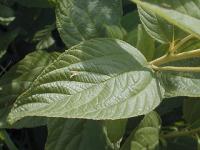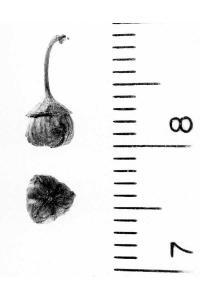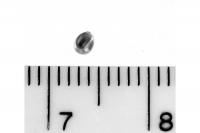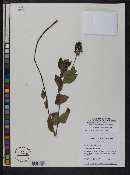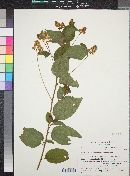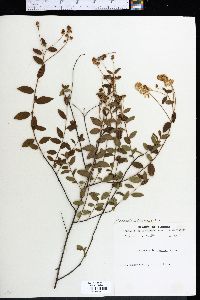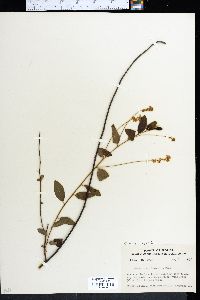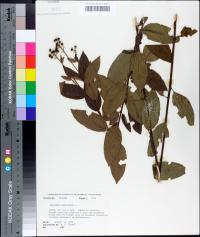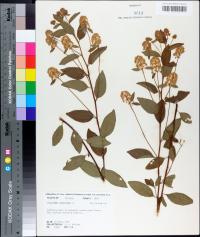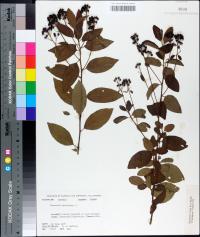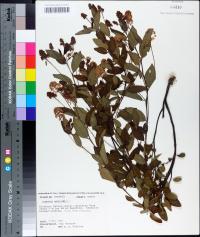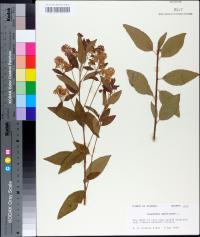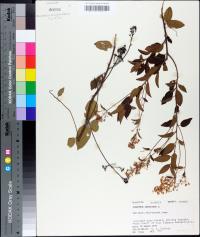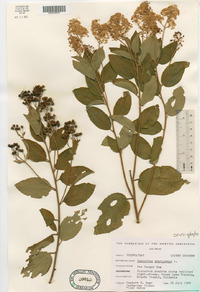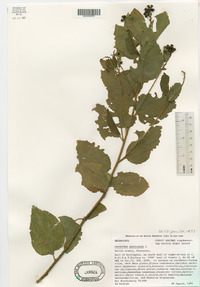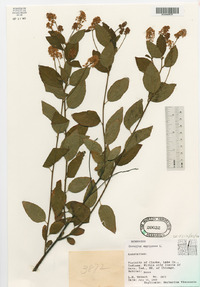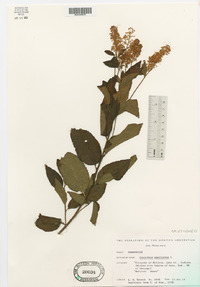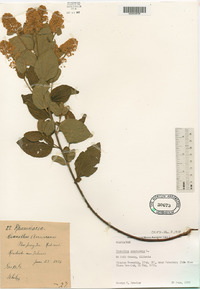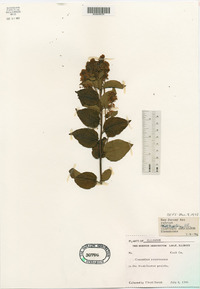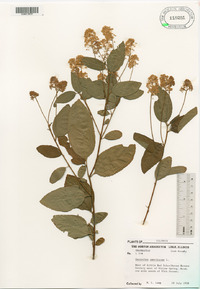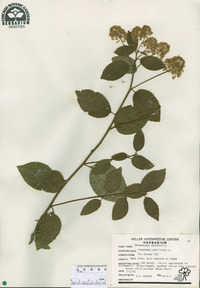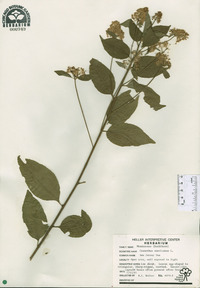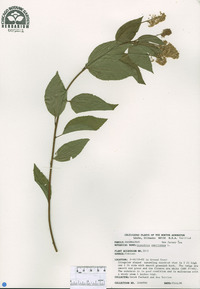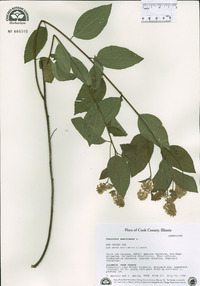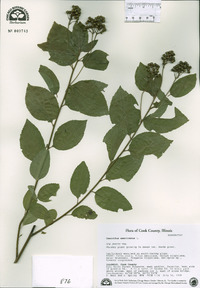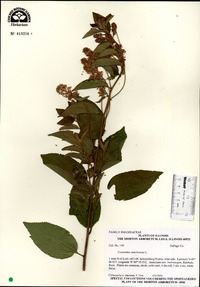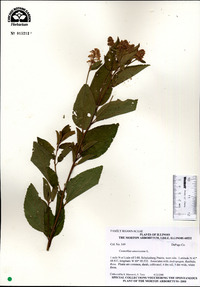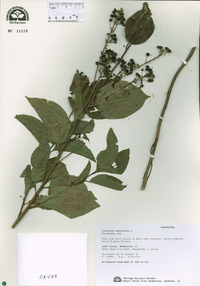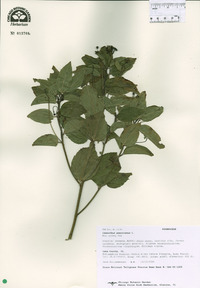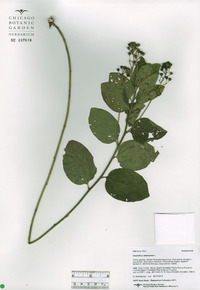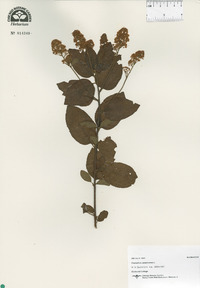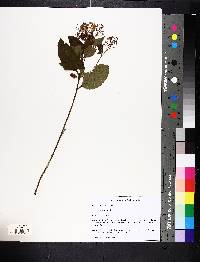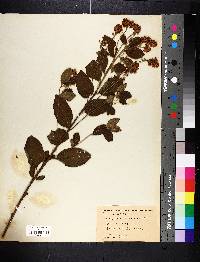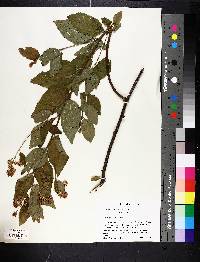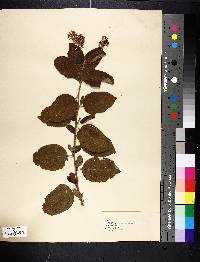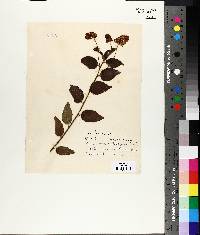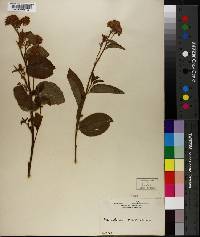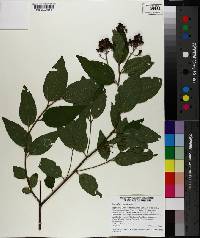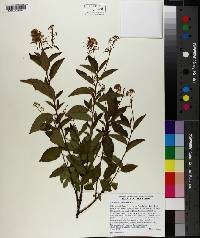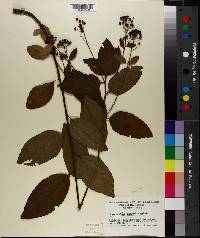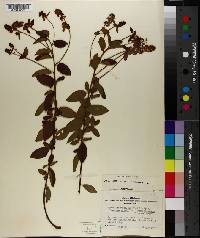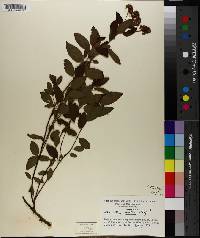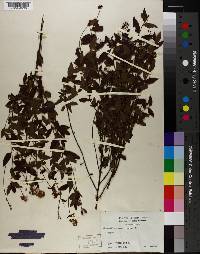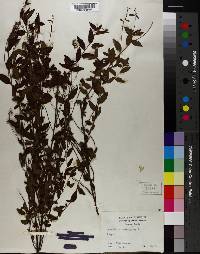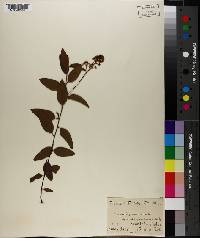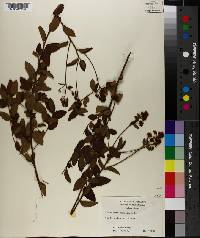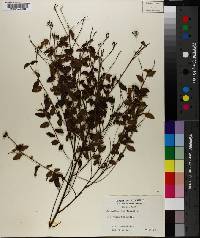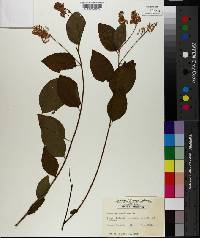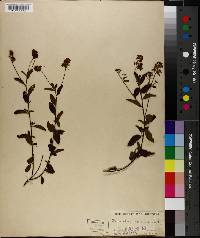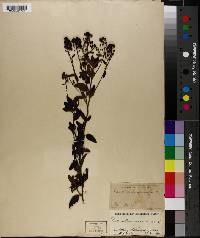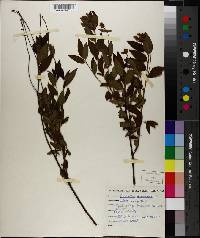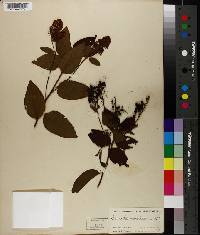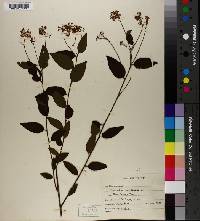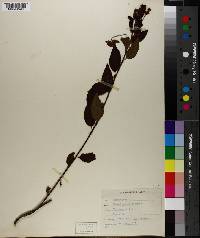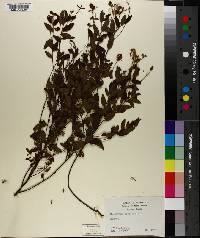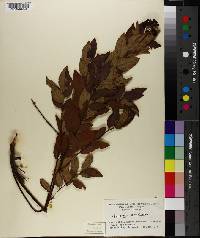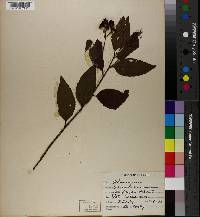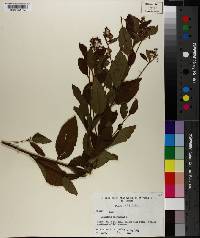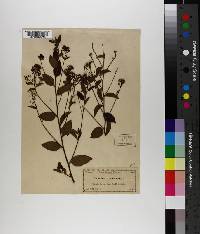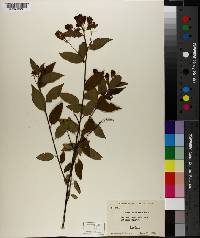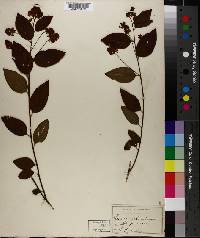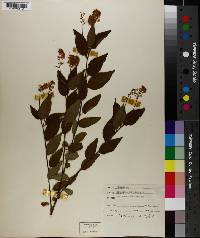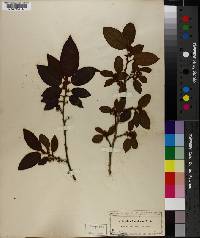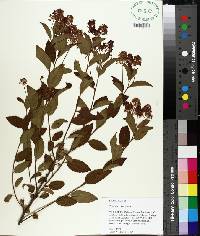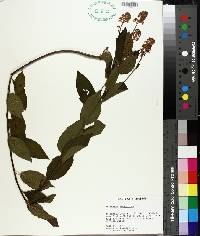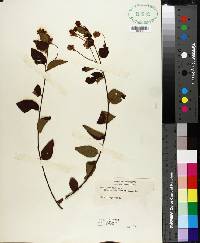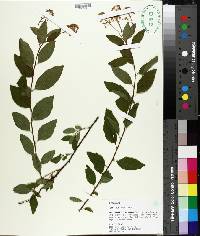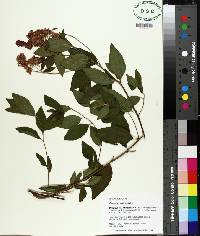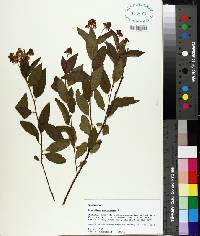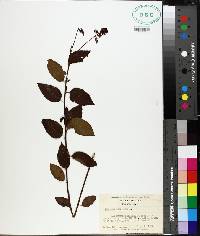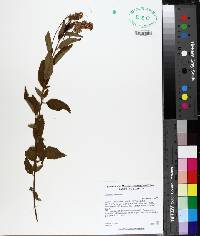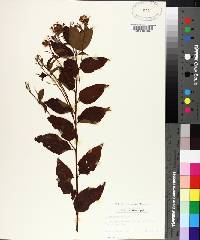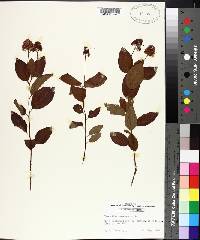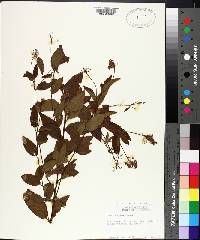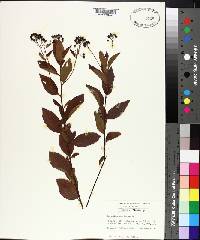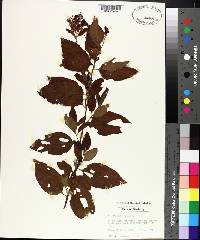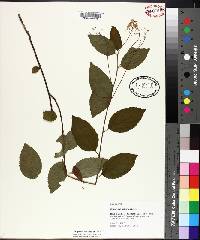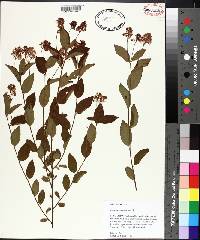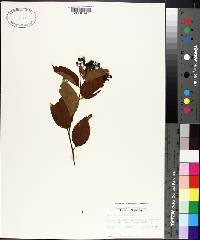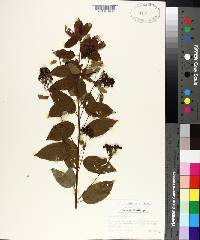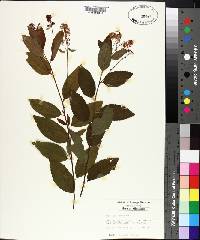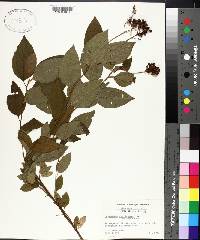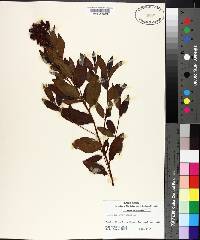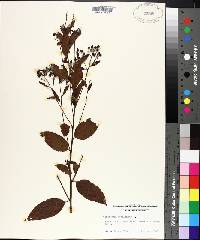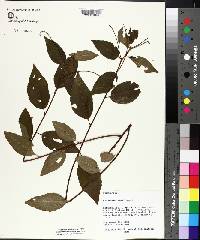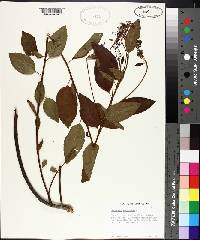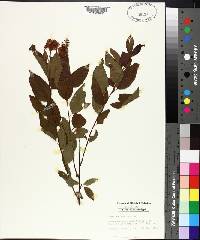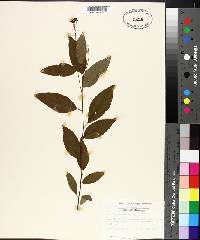Ceanothus americanus
|
|
|
|
Family: Rhamnaceae
New Jersey-Tea
|
Shrub to 1 m tall, to 1.5 m wide Leaves: alternate, stalked, dark green above, gray beneath, 3 - 8 cm long, 2 - 6 cm wide, broad egg-shaped to oval with a heart-shaped to rounded base and a pointed tip, finely toothed, hairy above, velvety beneath (sometimes only on veins), with three major veins radiating from base. Inflorescence: loosely branched (panicle), borne in a leaf axil on a stalk 5 - 20 cm long, short-cylindric to egg-shaped, 3 - 10 cm long. Flowers: white, tiny, fragrant, with five clawed petals resembing tiny ladels and five stamens. Fruit: a dry, black, berry-like capsule, 5 - 6 mm long, round to triangular, three-parted, with three reddish brown nutlets. Twigs: flexible, dark grayish green to brown, covered with dense hairs. Buds: egg-shaped and pointed. Form: compact with dense upright branches. Similar species: The similar Ceanothus herbaceus has mostly narrow oblong to elliptic leaves, and the inflorescences arise at the tips of the stems. Flowering: June, with sporadic flowering throughout summer Habitat and ecology: Black oak savannas, mesic and dry prairies, and mixed deciduous forests of the dune region. The species forms a large crown and mass of woody roots which help it survive degradation. Occurence in the Chicago region: native Notes: Ceanothus americanus is grown as an ornamental and has a symbiotic relationship with a nitrogen-fixing bacteria. Insects are attracted by the flowers, deer eat the leaves, and birds eat the fruit. Native Americans once made the leaves into a tea and used the large woody roots as fuel on bison hunts and when firewood was scarce. Colonists used the leaves as a substitute for black tea after the Boston Tea Party to support patriotism during the American Revolution. Etymology: Ceanothus comes from an ancient Greek name for a different plant. Americanus means "from North America." Author: The Morton Arboretum Shrub to 1 m, often freely branched; lvs narrowly to broadly ovate, 3-8 cm, usually more than half as wide, obtuse or acute, broadly cuneate to rounded or subcordate at base, the lateral nerves often naked for 1-3 mm at base; infls on axillary peduncles, the lower peduncles progressively longer and to 2 dm, each panicle short-cylindric to ovoid, occasionally branched, often subtended by 1-3 reduced lvs, the individual umbels of the panicle usually separated by distinct internodes; fr depressed-obovoid, 5-6 mm; 2n=24. Upland woods, prairies, and barrens; Que. to Minn., s. to Fla. and Tex. June, July. Var. americanus, occurring mostly in and e. of the mts., has the leaves sparsely pilose only along the nerves beneath. Var. pitcheri Torr. & A. Gray, occurring w. of the mts., has the lvs pubescent across the surface beneath. Var. intermedius Torr. & A. Gray, occurring on the coastal plain from Va. s., differs from var. americanus in its very much branched habit, more numerous infls, and small lvs commonly 2-4 cm. Gleason, Henry A. & Cronquist, Arthur J. 1991. Manual of vascular plants of northeastern United States and adjacent Canada. lxxv + 910 pp. ©The New York Botanical Garden. All rights reserved. Used by permission. From Flora of Indiana (1940) by Charles C. Deam Infrequent throughout the state in dry situations, being more frequent in the sandy soil of the lake area, especially in the dune area. South of the lake area it prefers the slopes and crests of black and white oak ridges and is found also on limestone and sandstone bluffs. |

